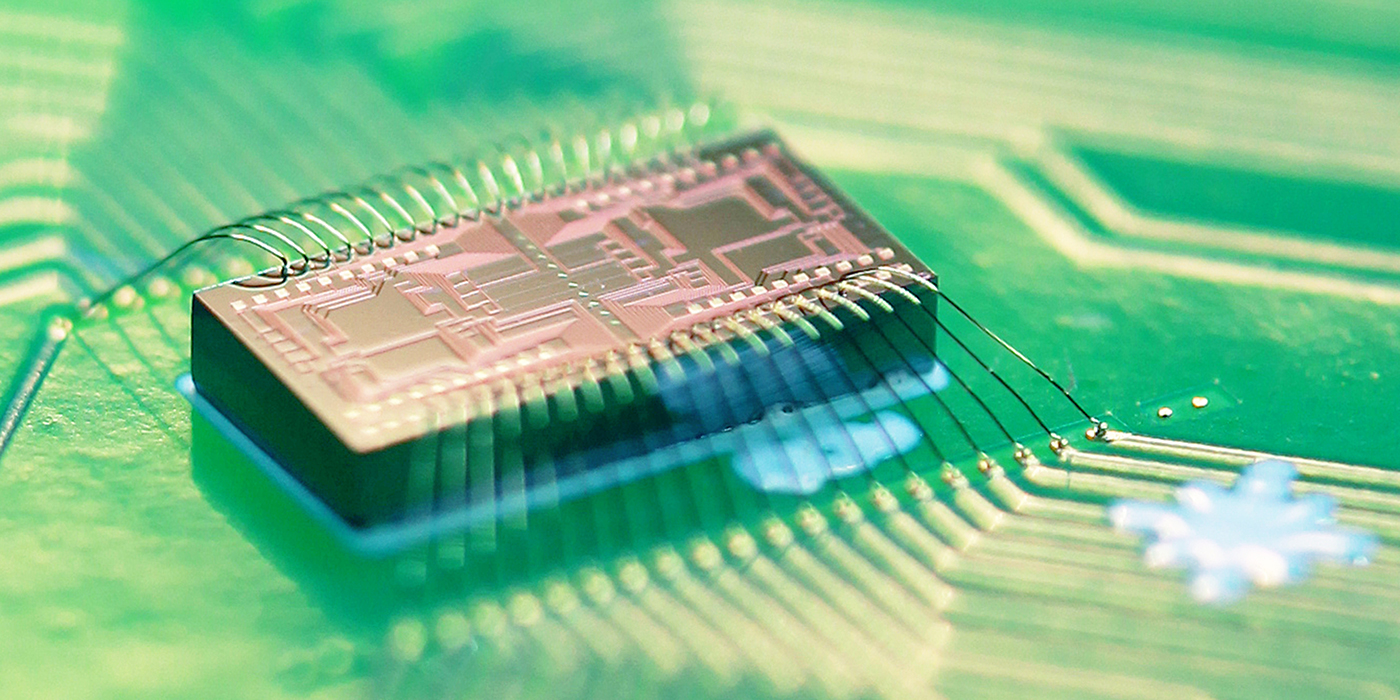
Researchers Receive NSF Grant to Develop New Quantum Technologies for Secure Communication
Published Date
By:
- Liezel Labios
Share This:
Article Content

Small, stable, electronically-controllable microchips with a multi-component photonic integrated circuit could potentially miniaturize bulky table-top equipment for quantum communication. Credit: Micro/Nano-Photonics Group at UC San Diego
A multi-institutional team of researchers led by the University of California San Diego has received a grant from the NSF Office of Emerging Frontiers and Multidisciplinary Activities (EFMA) to develop and manufacture microchips that would enable secure and efficient quantum communication. The technology has applications in long-distance fiber optic communication and will help advance research in quantum sensing and computing.
“This new NSF program will bring together many of our nation’s most innovative researchers in quantum photonics to launch a coordinated attack on some of the most long-standing and high-value research challenges in optics,” said Shayan Mookherjea, an electrical engineering professor at the UC San Diego Jacobs School of Engineering and the principal investigator of the four-year project. “Through this project, students and researchers at UC San Diego, which has a small but growing focus of research activity in quantum science and technology, will learn from and work alongside world-leading experts and pioneers in quantum optics.”
The project’s co-investigators are Paul Kwiat and Virginia Lorenz, physics professors at the University of Illinois at Urbana Champaign, and Alexander Sergienko, professor of electrical engineering and physics at Boston University.
This team is one of six interdisciplinary teams that will be funded to perform potentially transformative, fundamental research for Advancing Communication Quantum Information Research in Engineering (ACQUIRE), a research topic in the NSF Directorate for Engineering’s Emerging Frontiers in Research and Innovation program.
The goal of these ACQUIRE projects is to demonstrate an engineered quantum communication system on a chip that operates at room temperature with low energy in a fiber optic network with quantum-entangled photons. The system would use photons—minute particles of light—in pre-determined quantum states as a way to encrypt data.
Researchers have long sought to encode photons with information that could travel through fiber optic cables across vast distances. Each of these photons would be immutably linked to a photon counterpart on the other side of the cable through a phenomenon known as quantum entanglement. A stream of encrypted data would follow behind each encoded photon.
Any attempt to intercept, tamper with or divert the data would alter the entangled photon’s quantum state and become evident when it arrives at its destination. If a compromised photon is detected, the quantum key to unlock the encryption no longer works, and the communication remains secure.
As the demand for better cybersecurity increases, the unbreakable encryption offered by quantum communication is a tantalizing idea. While such a communication system may currently be demonstrated in laboratories, it is possible only at cryogenic—very low—temperatures and with bulky, energy-intensive equipment.
To bring this idea to life, Mookherjea’s team will partner with quantum photonics researchers at the University of Illinois at Urbana Champaign and Boston University to develop a low energy, scalable engineered quantum communication system that doesn’t require cryogenic temperatures.
Researchers will design, fabricate and demonstrate microchips for quantum communication using entanglement over conventional optical fiber. The team’s research will focus on creating ultra-compact (centimeter-scale) microchips to generate and detect entangled, heralded and single photons for quantum memories—without cryogenic cooling—and to demonstrate quantum key distribution protocols based on encoding time-bin information with gigahertz-rate clocking.
Researchers will utilize scalable manufacturing techniques based on established micro-electronics foundry platforms, which would help reduce the costs for large-scale production of these microchips. This work will also enable the team to develop a fully-integrated quantum repeater for optically connected communication networks.
Share This:
You May Also Like
Stay in the Know
Keep up with all the latest from UC San Diego. Subscribe to the newsletter today.


